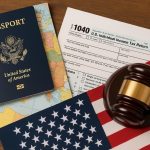We all like to think that we’re safe drivers out on the road—however, some are more honest about it than others.
Not stopping for a stop sign or red light, road rage, and more are all obvious bad driving habits that we all strive to avoid and usually don’t brag about. But there are some driving habits that we have that we either don’t understand the full dangers of or that we do understand, but we still brag about anyway.
No one wants to face potential criminal penalties for fatal car accidents. Read on to discover what to avoid, what to do, and why to make your next drive that much safer.
Avoid: Distracted Driving
Distracted driving refers to more than just texting and driving, though that is also something you shouldn’t do. It means no eating while driving, no phone calls, and generally avoiding multitasking. Let’s break each one of these down to understand what makes them so dangerous.
Eating while driving requires not only multitasking, which we’ll discuss in a bit, but also to take both your hands and your eyes off of the wheel. You need to look over and reach out a hand to grab a fry from your fry box that is balanced in a drink holder, you have to look down to bite the sandwich that is held in both hands, you must try and avoid burning yourself, etc.
Pulling over to eat your meal or snack will not only make you drive safer but it will also allow you to enjoy your food to its fullest which is always a good thing.
You’ve probably driven while taking a phone call before. “What’s the harm?” you probably thought, “I can talk and drive.” If you were talking to a passenger in the vehicle who could react appropriately to the conditions of the road, sure.
But talking on the phone not only can make you more likely to look at your phone, it also draws your attention away from the world around you. Your reaction times will be slower and you’ll notice less, putting both yourself and those around you in danger.
Do: Follow the Speed Limit
Sometimes following the speed limits seems tedious. Does it really matter if both the sky and the road ahead of you is clear? The answer is a resounding yes because for the past twenty years almost one-third of all vehicle deaths were caused by speeding.
It makes sense; going too fast reduces how fast you can react to things and makes it take longer to stop. Losing control of the giant, metal missile you call a car is also easier at high speeds.
You may think you’ll be fine should you crash; you’re wearing your seatbelt after all. This is not true, though. Not only does driving too fast make the crash more severe but it also makes the safety features not work as well.
Think about it this way: your airbag is like a pillow protecting your face from the dashboard. It will protect you from slamming your face too hard when you’re going slow enough but crank up the speed and watch as it does little to nothing to prevent harm. It could even result in the airbag itself causing injuries.
Same thing with the seatbelt. If you thought the seatbelt bothered your neck before, just wait until you get into a high speed crash and it jerks back against your body.
Avoid: Tired Driving
It’s dark outside and the air is a bit chilly as you head to your car after clocking out of work. You yawn as you fasten your seatbelt and turn the key. Your vehicle hums to life and you begin the long drive home, yawning a few more times along the way. The danger of this scene may not be obvious but driving drowsy is comparable to driving drunk.
Another danger is falling into a microsleep. You’re only asleep for a few seconds and may not even realize that that has happened, but the impact proves it. As all of the texting and driving ads warn, looking away from the road for even a second can result in disaster. Now imagine that instead of willingly looking down at your phone you accidentally fall asleep for a few seconds.
If you start yawning too often, have trouble keeping your eyes open or find yourself struggling to remember the last few miles you just drove, pull over and take a quick nap. It’s not worth risking falling asleep at the wheel to get home fifteen minutes sooner.
Do: Mind the Weather
No one likes days with poor weather. Fog feels eerie, rain is gloomy, ice is slippery and snow is cold. These days become even worse when you have to drive in the poor weather. Many people try to avoid it when they can, but it can’t be avoided completely, unfortunately. You can understand how to drive in each weather condition safely, though, which may make the drive feel better.
The main piece of advice for every weather condition is to slow down. Fog reduces visibility so slowing your speed and using your low beams will both decrease your stopping time and make it a bit easier to see.
Rain makes the roads slippery even if you don’t realize it. A risk of rain drives that you may not have considered seriously is hydroplaning because the rain sits on top of the road and can cause your tires to ride on that instead of the road. This decreases your traction and is likely to cause a crash. Hydroplaning is not too different from driving on ice so keep that in mind.
Driving in snow is just a nightmare. If you have no choice but to drive on snow or during any other weather, just drive slower, avoid braking too suddenly and pay attention and you should make it through the weather just fine.
Lynn Martelli is an editor at Readability. She received her MFA in Creative Writing from Antioch University and has worked as an editor for over 10 years. Lynn has edited a wide variety of books, including fiction, non-fiction, memoirs, and more. In her free time, Lynn enjoys reading, writing, and spending time with her family and friends.















